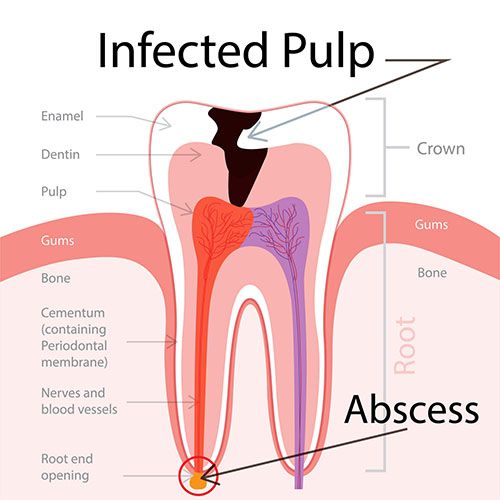Root Canal Treatment In Bawana, Kanjhawala, Rohini, Ghevra
Root Canal Treatment (RCT) is a dental procedure used to treat a tooth that has a damaged or infected pulp (the innermost part of the tooth). The pulp contains nerves, blood vessels, and connective tissue, and when it becomes infected or inflamed, it can cause significant pain and lead to other dental issues if not addressed.
Here’s an overview of the typical steps involved in a root canal treatment:
- Diagnosis:
- The dentist examines the tooth, takes X-rays, and assesses the extent of the infection or damage to determine if a root canal is necessary.
- Anesthesia:
- Local anesthesia is administered to numb the affected tooth and the surrounding area to ensure the patient is comfortable during the procedure.
- Isolation:
- The dentist places a rubber dam around the tooth to keep it dry and free of saliva during the procedure.



Root Canal Treatment In Bawana, Ghevra, Kanjhawala, Rohini
Access Opening:
The dentist drills a small access hole in the tooth to reach the pulp chamber and root canals.
Cleaning and Shaping:
The infected or damaged pulp is removed, and the root canals are cleaned, shaped, and disinfected to eliminate bacteria and debris.
Filling:
The cleaned and shaped root canals are filled with a biocompatible material, typically gutta-percha, to seal the space and prevent further infection.
Restoration:
After the root canal, the access hole is sealed with a temporary or permanent filling. In many cases, a crown may be recommended to provide additional strength and protection to the treated tooth.
Root canal treatment is an effective way to save a tooth that would otherwise need to be extracted. It alleviates pain, removes infection, and allows the tooth to function normally. It’s important to follow up with any recommended restoration procedures, such as placing a crown, to ensure the long-term success of the treatment.
Root Canal Treatment In Bawana, Ghevra, Kanjhawala, Rohini
Here is an overview of the root canal treatment process:
- Diagnosis:
- The dentist examines the patient’s dental history and symptoms.
- X-rays may be taken to identify the location and extent of infection or damage.
- Local Anesthesia:
- Before the procedure, the dentist administers a local anesthetic to numb the affected tooth and the surrounding area.
- Access Opening:
- The dentist creates an opening in the crown of the tooth to access the pulp chamber.
- Pulp Removal:
- The infected or damaged pulp is removed from the pulp chamber and root canals using specialized instruments.
- Cleaning and Shaping:
- The interior of the tooth (pulp chamber and canals) is cleaned, disinfected, and shaped to prepare it for the filling material.
- Filling Material:
- The cleaned space is filled with a biocompatible material called gutta-percha to seal the canals and prevent further infection.
- Sealing the Access Opening:
- The access opening created in the crown is sealed with a temporary or permanent filling.
- Restoration:
- In many cases, a tooth that has undergone a root canal may need additional support. A dental crown is often placed over the tooth to restore its strength, function, and appearance.
- Follow-Up:
- Patients may be advised to schedule a follow-up visit to ensure proper healing and assess the success of the root canal treatment.
Benefits of Root Canal Treatment:
- Pain Relief: Root canal treatment is often performed to relieve pain caused by infection or inflammation of the tooth pulp.
- Tooth Preservation: The procedure allows for the preservation of a natural tooth that might otherwise need extraction.
- Functional Restoration: With a dental crown, the treated tooth can function normally within the dental arch.
It’s important to note that root canal treatment in bawana is a routine and generally well-tolerated procedure. Advances in dental technology and techniques have made the process more efficient and comfortable for patients. If you are experiencing tooth pain or suspect a dental infection, consult with a dentist who can evaluate your condition and recommend appropriate treatment options, which may include root canal therapy.



